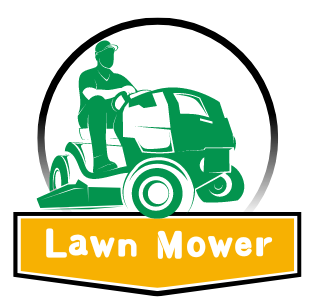Well, without any doubt, sharpening your mower blades at the right time ensures a clean and precise cut, results in much healthier grass growth, and improves the overall appearance of your lawn. Sharpening your lawnmower blades also improves cutting efficiency and reduces the load on the mower’s engine, which definitely results in a smoother mowing experience.
In this article, I will share with you what signs you have to look for to decide whether to sharpen the blade or not, the drawbacks of not sharpening your blade, and how often you have to sharpen the blade. I will also discuss whether to sharpen the blade by yourself or with professional sharpening and give you some tips on sharpening the blade by yourself. So let’s get started.
The 3 Most Obvious Signs Your Lawnmower Blades Need Sharpening
Knowing whether your lawnmower blade needs sharpening is straightforward and easy to do, just look for these 3 main signs, which will immediately start showing up if your blade requires any sharpness.
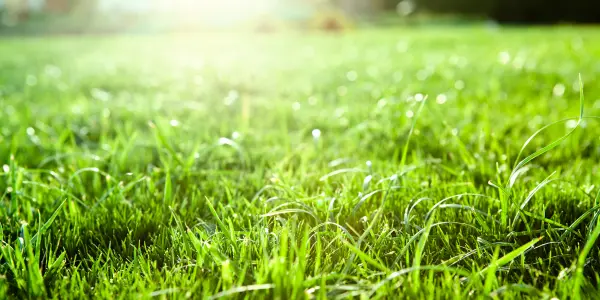
- Uneven Cuts: After the mowing session, just look over the lawn. If you see uneven cuts or the mower is leaving patches of uncut or partially cut grass, then it’s a clear sign your mower blades are dull.
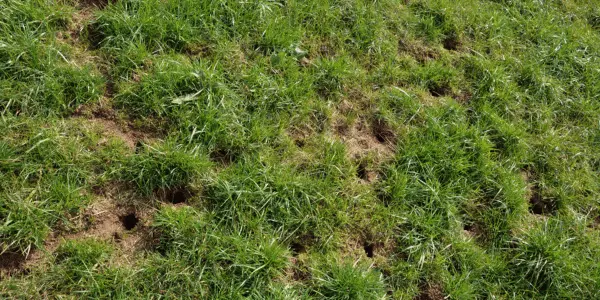
- Tearing Grass: If your lawn mower is tearing or shredding the grass instead of cleanly slicing through the grass, then yes, your blades require sharpening.
- Ragged Edges: If you notice ragged or frayed edges on the grass after mowing, it’s a sign that your blades are no longer sharp enough.
What if You Keep Using the Lawnmower with a Dull Blade?
The answer is pretty clear here, using dull lawnmower blades can have bad effects on your lawn’s health as well as your lawnmower.
With a dull blade, the grass is more likely to be torn rather than cleanly cut, making it more susceptible to disease and pest infestations.

Additionally, uneven cuts can restrict proper grass growth, and within 2 or 3 days after the mowing, your grass tips start turning brown.
Also, it will be time consuming, as you have to do multiple passes to get the desired cuts.
As I said, your lawnmower engine will be at risk, the blades struggle to cut through the grass, and the engine must work harder to maintain blade speed, leading to increased fuel consumption and wear on engine components. Over time, this can contribute to premature engine failure and costly repairs.
You will also notice that dull blades can cause excessive vibrations in the mower deck, resulting in accelerated wear on various components. Vibrations will eventually lose the bolts and fasteners, which will lead to further damage and potential safety hazards
Lastly, dull lawnmower blades pose a safety risk by throwing debris at high speeds, potentially causing injury or property damage. So it’s better to avoid all these issues by sharpening your blade at the right time.
What Does a Dull Blade Look Like?

Blunted Edges: Take a closer look at the edges of the blade. Instead of sharpness, you might notice a blunted or rounded appearance. Which means the blade is not sharp.
Damage: Look for nicks and chips along the cutting edge. And if you find these on your blade, then yes, your blade is dull now.
Rust or Discoloration: Sometimes leaving the mower for a long time without proper storage can result in discoloration or rust on the blade, which eventually requires cleaning and sharpening.
If your blades have lost their edge, it’s time to learn the best way to sharpen them. Explore this article to discover the simplest ways to sharpen your lawnmower blade
Should Mower Blades be Razor Sharp?
Blades that are too sharp can tend to dull quickly, so mower blades do not need to be razor sharp, but they should be sufficiently sharp to cut grass cleanly without tearing. There should not be any nicks or rough areas, and it should be as sharp as a butter knife.
How Long Do the New Blades Last, and Do They Need Sharpening?
As a general rule of thumb, it’s recommended to check your lawnmower blades after at least 10 to 12 hours of mowing to identify any need for blade sharpening. However, you might need to sharpen the blade more frequently, depending on these factors:
Mowing Frequency: If you mow your lawn frequently, your blades may need sharpening more often to maintain optimal cutting performance.
Lawn Size: Larger lawns may require more frequent blade sharpening to ensure consistent cutting across the entire area.
Grass Type: Some grass species are tougher and more resilient than others, leading to faster blade wear, like Perennial Ryegrass, usually found in golf courses.
Blade Quality: Yes, quality does matter. Higher quality blades made from durable materials may maintain sharpness for a longer period compared to lower quality alternatives.
Check out this useful guide for choosing the right types of blades for your lawnmower!
DIY vs. Professional Sharpening
Deciding whether to sharpen your lawnmower blades yourself or go to a professional depends on various factors, including your skill level, available time, and budget. lets find out more
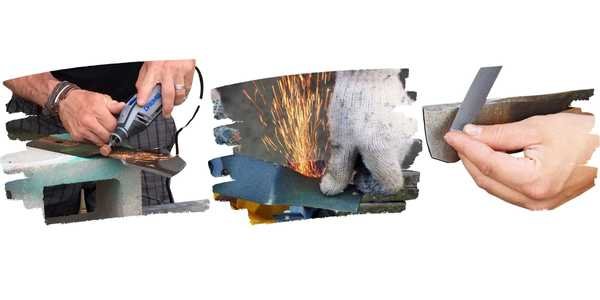
Sharpen Your Mower Blades by Yourself?
Saves You Some Cash: When you sharpen your own blades, you’re skipping the fees you’d pay for professional sharpening services. Sure, you might need to buy some tools upfront, but in the long run, it’s a money saver compared to shelling out for frequent pro sharpening.
No More Waiting Around: If you got free in the afternoon and noticed your blades are getting dull? You did it right away! Having your own sharpening tools handy means you can give your blades a tune up whenever they need it, without having to wait or make extra trips.
Learn a New Skill: There’s something satisfying about mastering a new task, right? Sharpening your own blades isn’t just about saving money, it’s also about gaining some know how about your machine.
Get Back to Mowing ASAP: Well, even with professional sharpening, you have to remove the blade from the mower and make a trip to a nearby store to get it sharp, and again, the blade needs to be reinstalled in the mower, so it might be time consuming. Alternatively, additional charges have to be paid for home blade sharpening services, or you have to carry the whole mower in your car.
Sharpen Your Mower Blades from Professional
Affordability: Many local hardware stores, such as Ace or True Value, offer blade sharpening services for a nominal fee, Usually for the standard blade is around $10 (off-mower blade). This makes professional sharpening an affordable option for most homeowners.
Convenience: Hardware stores that provide blade sharpening services often complete the task in a matter of minutes. This means you can drop off your blade and pick it up shortly afterward, saving you time and effort.
Expertise: Obviously, professional sharpening services are performed by trained professionals who have experience in blade sharpening. They use specialized equipment and techniques to ensure that the blades are sharpened accurately and evenly.
Equipment Requirements: In self sharpening, which requires specific tools and equipment, professional sharpening services eliminate the need for you to invest in sharpening tools or learn sharpening techniques. It might be a convenient option for some homeowners who may not have the necessary tools or skills for sharpening blades themselves.
I have put both perspectives together, and now the decision lies with you and your preference regarding which option best suits your needs for sharpening your lawnmower blade.
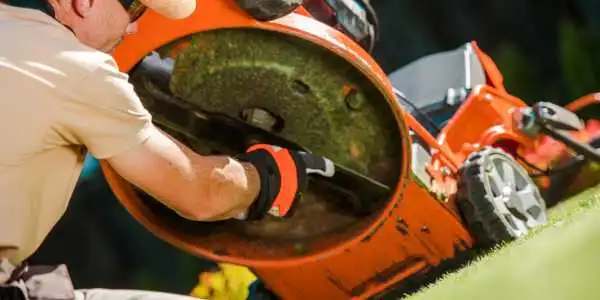
Can You Sharpen Lawn Mower Blades Yourself Without Taking Them off the Mower?
Yes, you can definitely sharpen your lawn mower blades yourself without going through the hassle of taking them off the mower. Here’s a quick how to:
Safety First: Before you do anything, make sure the mower is turned off, and the spark plug wire is disconnected to avoid any accidents.
Raise the Mower: Lift the mower deck to access the blades. You can use a jack or prop it up securely.
Secure the Blade: Use a block of wood or a blade locking tool to keep the blade in place while you sharpen it. This prevents it from moving around and causing accidents.
Sharpen Away: With a sharpening tool like a file or a grinder, carefully sharpen the blade edges. Follow the original angle of the blade, and make sure to remove any nicks or dull spots.
Check for Balance: Once you’re done sharpening, it’s essential to check the blade’s balance. An unbalanced blade can cause vibrations and damage to the mower. You can use a blade balancer or even a nail to ensure it’s balanced properly.
Lower the Mower: After sharpening and balancing, lower the mower deck back down, reconnect the spark plug wire, and you’re good to go.
Conclusion
In conclusion, maintaining sharp lawnmower blades is essential for a well groomed lawn and efficient mowing. Neglecting blade care can harm grass health and weaken the mower’s engine. Whether choosing DIY or professional sharpening, both methods have value. Regular maintenance is key to prolonging mower life and ensuring optimal mowing quality. Prioritizing blade care guarantees a beautiful lawn with every mow.
